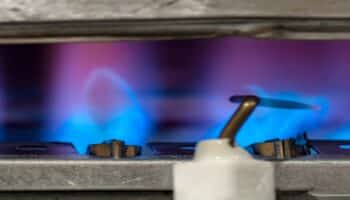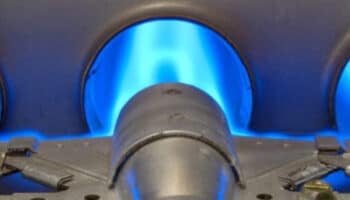Does your furnace smell like gas?
You’re not alone! I understand how concerning a gas smell can be, especially when you don’t know what’s wrong with your furnace.
Luckily, you’ve come to the right place for answers.
If your furnace smells like gas, you’ll need to inspect the gas line and flue pipe, replace the air filter, clean the burners, and check the heat exchanger.
Keep in mind that gas leaks are dangerous, posing both health and safety risks. If you identify a gas leak, leave your home immediately and call the gas company. Only after making sure it’s safe to return, you should consider inspecting your furnace.
Read on to keep your furnace from smelling like gas!
Does Your Furnace Smell Like Gas? Try These 5 Fixes
In this section, I’ll guide you through the different reasons that can explain why your furnace smells like gas and provide various solutions.
Keep in mind that when you switch on your furnace after it’s been idle for a few months, it’s normal to detect a brief smell of gas. Furnaces can also release a subtle gas odor when they cycle on. However, if the smell becomes overpowering and doesn’t go away, it indicates a problem.
Remember that if you suspect a gas leak, you should turn off the gas supply and ventilate the area immediately. Do not light matches or use any electrical switches.
Are you ready to fix the problem? Let’s dive in!
#1 Inspect the Gas Line and Valve
When fixing a furnace that smells like gas, I always start by inspecting the gas line.
Over time, the materials used in the gas line can corrode or become damaged. In such cases, it’s common to perceive a rotten egg smell or hear a hissing sound.
Natural gas and propane are actually odorless. To make gas leaks easily detectable by smell, utility companies add a chemical called mercaptan to the gas.
To check if your furnace’s gas line leaks, please follow these simple instructions:
- Ensure there are no open flames nearby, such as candles or cigarettes. Opening the windows and doors to ventilate the area is also important.
- Mix a few drops of dish soap with water in a spray bottle.
- Turn on the gas supply and apply the solution to the gas line, including the joints and fittings.
- If you notice bubbles forming in the gas line, it indicates a leak.
Note: You can also use an electronic gas leak detector.
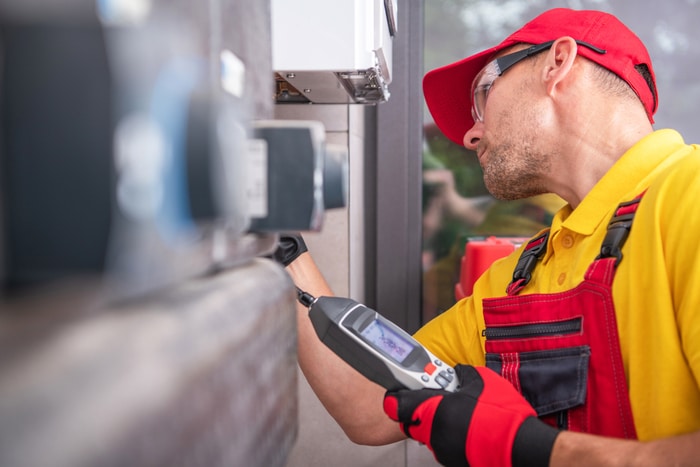
If the soapy water test indicates a gas leak, please turn off the main gas supply valve, ventilate the area, and call the gas company.
I don’t recommend attempting gas leak repairs on your own; it’s best to leave it to the professionals. They have the expertise and tools required to address the issue safely.
#2 Check the Flue
If your furnace smells like gas and you didn’t detect a leak, I recommend checking the flue.
The flue is responsible for venting gases produced during the combustion process to the outdoors. However, if the flue becomes obstructed or damaged, it can force the combustion gases back into your home, leading to a gas odor.
Keep in mind that a back-drafting furnace can pose a health and safety risk, as it can circulate gases like carbon monoxide into living spaces. Therefore, inspecting the flue promptly is crucial.
Begin by turning off your furnace. Then, look inside the flue using a flashlight and an inspection mirror. Check for any obstructions, such as soot buildup, debris, or even bird nests. If necessary, use a vacuum or long brush to clean the flue.
While you’re at it, look for any signs of damage, such as rust or holes. If you identify any issues with the flue pipe, I recommend calling a licensed HVAC technician.
#3 Replace the Air Filter
If the flue was not the issue, then it’s time for us to check the air filter.
The filter is responsible for capturing dander, dust, debris, and other allergens to prevent them from entering your furnace. Unfortunately, a clogged filter can restrict airflow and affect the combustion process. Incomplete combustion can result in unburned gas.
Follow these simple instructions to replace your furnace’s air filter:
- Turn off your furnace and locate the filter, which is typically near the fan or inside a duct opening. If you can’t find the filter, please click here or refer to the manufacturer’s manual.
- Carefully slide the filter out of its slot and get a compatible replacement.
- Slide the new filter into its housing. Make sure the arrows on the filter frame point in the direction of airflow.
Remember that you should change the air filter every 1 to 3 months to prevent performance issues and ensure your safety.
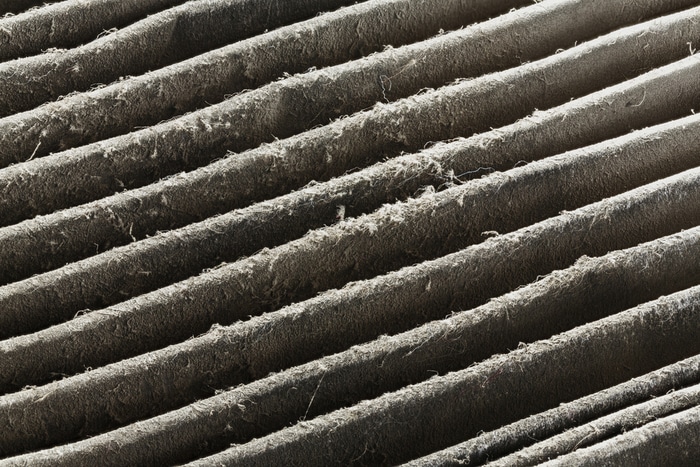
#4 Clean the Burners
When a furnace smells like gas, I usually advise cleaning the burners.
You see, the burners are responsible for mixing the fuel and air and then igniting them to generate heat and keep your home warm. Unfortunately, dirty burners can lead to incomplete combustion, where not all the gas is burned off, resulting in a gas smell.
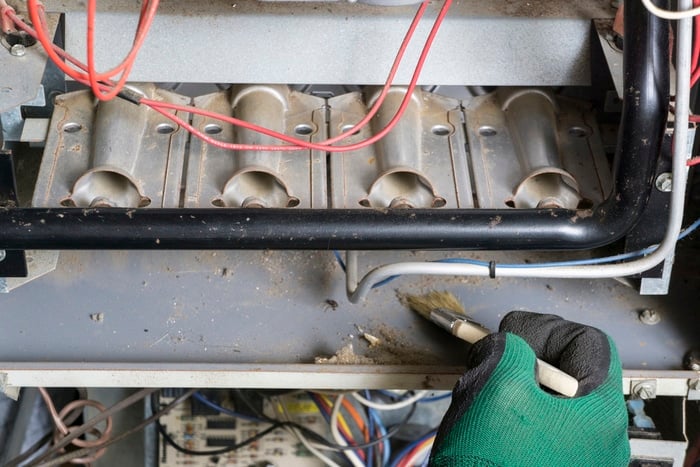
To solve the issue, you’ll need to clean the burners. Here’s how to do it:
- Turn off your furnace and the gas supply.
- Remove the access panel and locate the burners, which look like a series of metal tubes. If necessary, read the manufacturer’s manual for detailed instructions.
- Carefully access the burners. You’ll probably need to remove some panels or disconnect wires.
- Use a flashlight to inspect the burners. Then, clean them with an old toothbrush or air compressor. If necessary, rinse them with water and let them dry.
- If the burners are damaged, you must replace them to prevent combustion problems.
- Clean the gas line’s holes with a soft brush.
- Reassemble your furnace.
- Turn on the gas and power and test your furnace.
#5 Check the Heat Exchanger
If you’ve tried all the fixes mentioned above, but your furnace still smells like gas, then there’s probably an issue with the heat exchanger.
The heat exchanger is responsible for heating the air blown into your home. Unfortunately, if there’s a crack or hole in the heat exchanger due to overheating issues, combustion gases can leak into the air, leading to the smell of gas.
Therefore, it’s important to turn off the furnace and inspect the heat exchanger with a flashlight. If you notice any signs of damage, please call a professional. They’ll be able to replace it or check any other components safely.
Addressing Your Furnace’s Gas Smell
Hopefully, now you know how to keep your furnace from smelling like gas.
Remember to inspect the gas line for leaks. If you detect a leak, you’ll need to shut off the gas supply, ventilate the area, leave your home, and call the gas company.
However, if you didn’t find any evidence of a gas leak, don’t forget to check your furnace’s flue, clean the air filter and burners, and inspect the heat exchanger.
If you feel unsure or unsafe while inspecting your furnace, you must call a professional. Safety should always be your priority.
Thank you so much for taking the time to read this quick guide. If you’ve found it helpful, please check out our related articles below.
Good luck!





